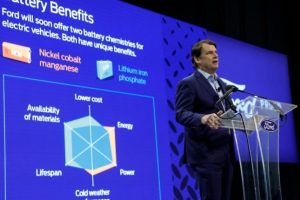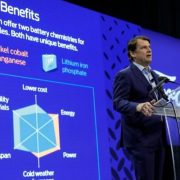LFP Battery Health Degrades At Full Charge, Study Finds
Aug 25, 2024

Electric vehicles powered by lithium iron phosphate (LFP) batteries are gaining popularity worldwide. Compared to traditional nickel manganese cobalt (NMC) batteries, LFP packs are cheaper to produce, pose a lower fire risk and offer greater longevity. However, they’re less energy-dense, which is why automakers typically use LFP batteries in entry-level models like the rear-wheel-drive Tesla Model 3, the base Ford Mustang Mach-E and the Dual Standard second-gen Rivian R1S among others.
Automakers say it’s best to charge your vehicle’s LFP battery to a 100% periodically, at least once a week in case of Tesla or once a month as per Ford. This helps with pack calibration, allowing you to have a more accurate range reading on your gauge cluster every time you get behind the wheel. They also recommend doing this to preserve battery health and avoid reduced performance.
That’s the exact opposite for NMC packs—offered on most EVs like Long Range Teslas—where manufacturers suggest setting a limit of 80-90% for daily charging. Charging them to a 100% can reduce the pack’s capacity to hold energy over time. This mainly happens because battery longevity is negatively associated with heat and voltage. The higher the state of charge, the more the voltage and heat in the pack which accelerates degradation.
However, a new study published last week in the Journal Of Electrochemical Society contradicts what automakers have been saying about LFP charging patterns. The study states that repeated charging cycles at a higher state of charge can harm LFP cells over time. The study specifies how this happens on the most granular level. But kudos to YouTuber Jason Fenske of Engineering Explained for breaking it down for us.
Researchers found that keeping LFP batteries fully charged creates harmful compounds in the pack from high voltage and heat. As you cycle the pack frequently—meaning discharging and charging fully—these harmful compounds deposit onto the negative electrode, consuming lithium, causing degradation. “At higher SoC, there’s higher voltage, negative reactions recurring within the electrolyte get accelerated, consuming the lithium inventory,” authors said.
If you’re not driving your EV for extended periods, leaving the battery in a lower state of charge can help, as reduced voltage doesn’t harm in the long run. “Cycling near the top of charge (75–100% SoC) is detrimental to LFP/graphite cells. Our results show a correlation between the average SoC of battery operation and capacity fade rate, meaning that the lower the average SoC, the longer the lifetime…,” the study stated. “Therefore, the time spent cycling at high states of charge is critical to minimize.”
Among the study’s authors was Dr. Jeff Dahn, an award-winning battery researcher who runs the Tesla-funded Jeff Dahn Research Group. Dahn’s lab is one of Tesla’s lesser known weapons. It helped the brand master the NMC chemistry. Electric Autonomy Canada toured the Tesla-funded lab in Dalhousie University in Canada last year. The outlet described the relationship between Tesla and the Dahn Research Group as “a yin and yang dynamic. One is a fast-moving, ever-hungry business. The other a slow-moving, diligent academic lab.”
Still, it has some flaws. The study states that a 0-25% charging cycle elongates battery life. That seems pointless in terms of convenience for everyday users, especially if you don’t have a home or office charger and rely on public charging. The study focuses solely on battery longevity, not overall best charging practices. It leaves out what’s best for the broader EV-buying audience, like specific use cases, convenience, charging times and more. So it’s still advisable to follow your automaker’s recommendations.
A higher charge is beneficial in most cases, like road-tripping, during power outages if you need vehicle-to-home charging, during winter when range loss is accelerated or simply for the peace of mind. Plus, modern batteries last hundreds of thousands of miles even with bad charging practices. It’s one of the reasons brands offer long warranties on them. That’s not to diminish the study, which still accomplishes the all-important task of discovering more facets of what is still a relatively new technology.
Above all, the authors don’t recommend changing your charging habits. “How practical is it to cycle a battery cell in only low SoC ranges? There is clearly a tradeoff between useful capacity and capacity retention… It is not realistic to recommend cycling LFP cells between 0%–25% SoC only, because that is a waste of capacity.”
Source:LFP Battery Health Degrades At Full Charge, Study Finds (insideevs.com)




